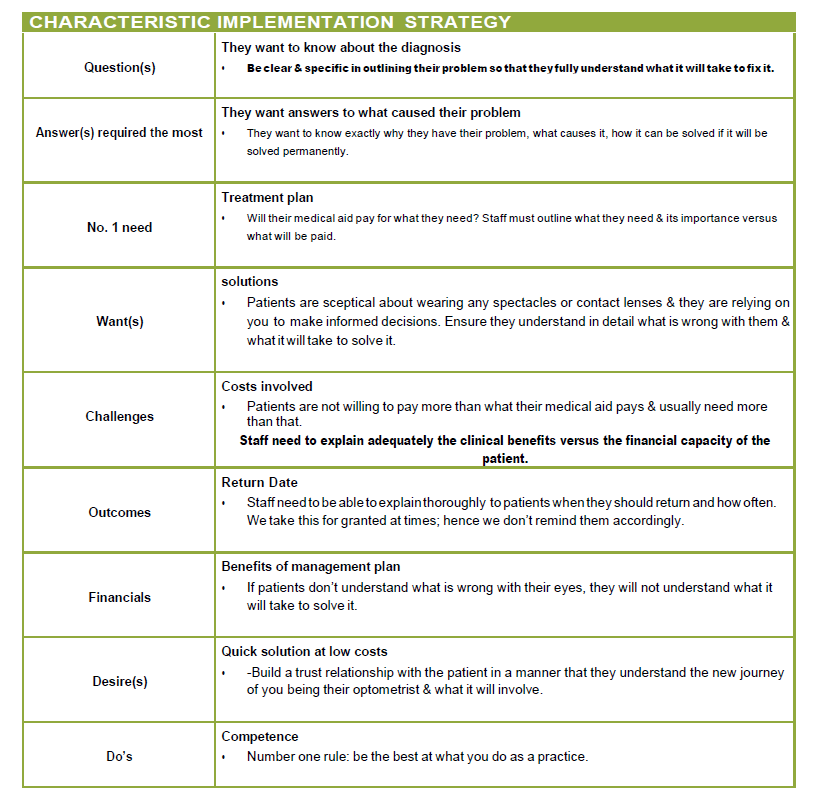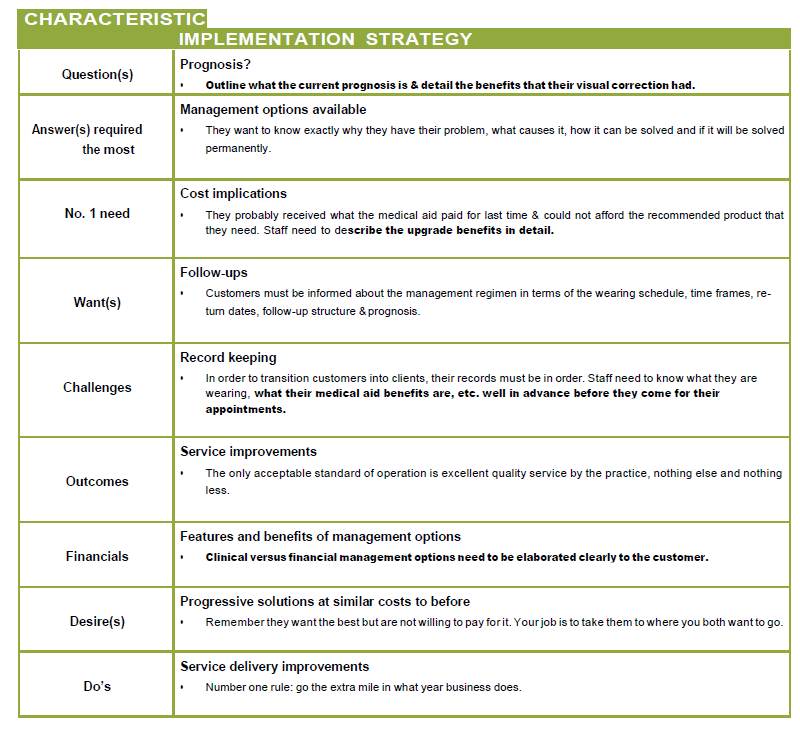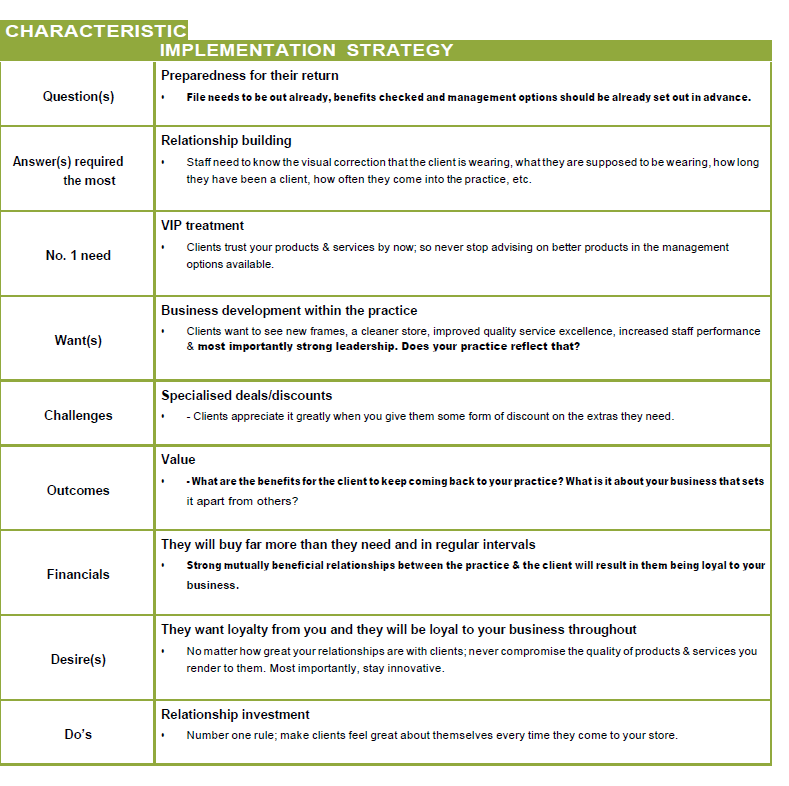

Optometry has three components which need to work cohesively in order for a business to experience continuous success. These components are academic, clinical and business.
For years, the Optometry Industry has been referring to the people that come to our practices as patients. However, since there is an educational, health and retail component, shouldn’t we then refer to the people as consumers?
Then, within consumers, you have patients, customers and clients.
Why is this important?
Well, consumers as a whole have distinct needs, requirements and expectations. Our responsibility as professionals is to ensure that we
cater to those specific needs in a manner that enhances and protects their overall care.
Let us now look at a couple of consumer examples that give the above statements context so that you can apply them in practice.

SCENARIO 1 – MANAGING THE PATIENT
“The patient is the person that has an eye problem that needs to be solved. They are usually the person that comes to the practice for the first
time or are referred by a health care professional. They currently do not have any visual correction.”

SCENARIO 2 – MANAGING THE CUSTOMER
“The customer is the person who currently wears a prescription; knows that they need visual correction or what their visual problem is, but they are not necessarily the person that has been to that particular store before. Not loyal to a practice as yet and may need an upgrade on their current correction.”

SCENARIO 3 – MANAGING THE CLIENT
“The client is the person who keeps coming back to the same practice year after year for all their visual requirements and management options.”

CONCLUSION
The consumer still requires these things more than anything else:
- Excellent quality of service delivery
- Genuine and advanced primary eye health care
- Affordability of quality products that address their visual needs
- Convenience and ease of access to your products, services and solutions
As your business keeps evolving, the consumer also evolves.
Never become complacent when it comes to how you manage them.










